Dr. Ted Cable
Our guest post today brings us to the least-visited continent of the world: Antarctica. Why would someone travel there? And how does one prepare for the trip?
It was a thrill to interview Dr. Ted Cable about his Antarctic trip. Ann Marie met him in 1983 when she audited an ornithological class at Purdue University. Ted, a teaching assistant at the forestry department, taught it. They have kept in touch ever since and last met up in 2019 to go bird watching in Kansas.
Ted is now an award-winning Professor Emeritus at Kansas State University. He has authored 15 books, several book chapters and scenic byway scripts, and more than 250 articles dealing with nature and travel. Ted has conducted tourism training throughout the United States, Europe, Africa, and South America. He co-developed training for the International Association of Tour Directors and Guides. He is the recipient of the Lifetime Achievement Award from the Association of Missouri Interpreters, the Legend Award from the American Academy of Park and Recreation Administrators, and he was named a Fellow of the National Association for Interpretation.
Ted travels around the world to watch birds, and it was his love for birds that turned his eyes towards the southern pole.
Interpretation
In the field of forestry, interpretation means communicating complex scientific data in a way the general public can understand it. It can take the form of guided tours, demonstrations, panels, interactive games, exhibits, or printed materials. Even writing a blog post like this one is a form of interpretation. And that’s precisely Ted’s specialty.
Ted’s book, The Gifts of Interpretation: Fifteen Principles for Interpreting Culture and Nature, has become a classic in the field. It has been translated into multiple languages and is used internationally to train and inspire tour guides, park rangers, and museum and zoo educators. In fact, this book currently is being used in Normandy, France to train guides at historic WW II sites. Anyone involved in giving tours or writing about an academic field for general audiences can profit from Ted’s book.
But now, let’s trim the sails and point our bow in the direction of the world’s coldest continent.
Antarctica
Travel and Culture: Tell us about your travel experience. Why and how did you choose to visit Antarctica?
Dr. Ted Cable: What do you say when asked to identify your favorite travel experience? I have had the privilege of visiting more than 50 countries and all 50 U.S. states. Before 2020, when someone would ask me about my favorite trip, I would be stymied. If you have been asked which of your children you love the most, you can relate to my dilemma. But all of that has changed. Now being asked to name which trip I loved the most is easy to answer. In January 2020, I cruised to Antarctica! Now my conversational challenge is to limit my gushing about my favorite trip to socially acceptable levels.
T&C: You don’t need to limit yourself with us — we are all ears! So why Antarctica?
My reasons for traveling to Antarctic were two-old. First, I had experienced all the other continents and wanted to have visited my final frontier. But perhaps the most important reason is that I am an avid birder who keeps a list of birds seen around the world. A trip to Antarctica would add special birds to my list impossible to see elsewhere and my hope was that this trip would put me over 4,000 on my life list.
I could not afford a typical high-end Antarctic trip featuring small ships and exciting Zodiac trips to shore. So, with my passion for birding, I chose to go with a birding company called WINGS, which organized a group to travel on a Princess Cruise Line ship – the Coral Princess. Using a major cruise line as our birding base resulted in seeing many more birds and at a fraction of the price.
T&C: What was your itinerary?
The 17-day cruise began in Buenos Aires, Argentina and ended in Santiago, Chile. It included stops in Montevideo, Uruguay, the Falkland Islands, Ushuaia, Argentina and Punta Arenas, Chile. At each of these ports a van would be waiting for us, and we would spend the day birding with local guides. These birding stops ashore provided some of the best memories of the trip. On the Falklands, we strolled around penguin colonies which included three different penguin species.
In the Chilean Andes, we had ridiculously close looks at a couple dozen Andean Condors sitting on the roofs of a ski resort, as well as splendid views of beautiful Diademed Sandpiper-Plovers. Near Ushuaia, we photographed the world’s largest woodpecker – the Magellanic Woodpecker. In the Ushuaia harbor, we saw two species of steamer duck. These odd ducks pushed my world life list to 4,000 species.
We spent several days at sea cruising through both the South Atlantic and South Pacific oceans, as well as four days in Antarctic waters. Of course, this meant we had two crossings of the temperamental and sometimes dangerous Drake Passage. Each of these maritime regions features their own assortment of seabirds. It was amazing to cover such diverse marine habitats. No two days at sea were the same. Often the differences were based on sea depth. At one point in the Atlantic north of the Falklands, we were birding where the ocean depth was more than three miles deep! We would be especially alert when we know that the ocean floor had a canyon or other topography that would result in a depth change. Seabirds congregate around such submarine topography as the currents and upwellings bring rich food to the surface.
T&C: What wildlife could you observe?
In total we saw seven species of penguins, and 45 species of tubenoses (petrels, shearwaters, etc.) including an amazing 12 species of albatross! Albatrosses glided behind and around the ship showing off their incredible size and graceful aerial acrobatics. At one point there were 37 Wandering Albatrosses swooping and soaring behind our ship. In addition to this amazing seabird diversity, we saw eight species of whales and several kinds of dolphins and sea lions.
T&C: What experience or activity did you enjoy most there? Tell us about it. Why was it memorable for you? How did it change your perspective or affect your writing?
Without a doubt it was the birding! The birding far exceeded my goals and expectations. One of our leaders was Steve Howell, a world- renown authority on seabirds and the coauthor of Oceanic Birds of the World. Having expert leaders was educational and they helped us identify confusingly similar birds. Traveling on a large cruise ship had advantages. The large ship afforded much more stable viewing than a smaller vessel. This was critically important in rough or rolling seas. The wide decks allowed us space to set up our scopes and camera tripods. And the fact that these open decks circled the ship provided views in any direction and gave us the ability to choose viewing locations out of the wind. Moreover, being on a cruise ship provided us with amazing and abundant food, nice cabins, and in the evening excellent entertainment.
One perspective that changed was my introduction to “birding by photograph.” Often seabirds were a great distance away or if close, they would quickly fly past our moving ship. In both cases it was nearly impossible to study the plumage to identify the bird. Our leaders and participants would quickly photograph the birds and then after-the-fact we could study the photograph in detail to identify the bird that we observed.
T&C: Did you have any specific goals for your visit – bird species or natural phenomena you wanted to see? To what extent could you fulfil them?
Besides goals of experiencing my final continent, and getting to 4,000 on my life list, I really wanted to see penguins. They are so intelligent, social, and dapper-looking. Walking among the penguin families in their colonies and seeing them at-sea was thrilling – an unforgettable highlight of my 50-plus years of birding!
T&C: How did you prepare for this trip?
The birding tour company WINGS, INC. provided a comprehensive packing list. Besides the actual packing, my preparation involved studying up on the birds of Argentina and Chile and especially studying pelagic birds.
T&C: Did you need any special clothing as protection against the cold?
Normal winter clothing was required. It was much like preparing for a skiing trip. Face and hand coverings were crucially important as the winds were brutal on exposed skin. An advantage of being on the cruise ship is that you could always just step back inside the ship to warm up and still be just a few steps from the action.
T&C: What would you tell someone else who wanted to travel there? What tips can you give us based on your experience?
I recommend Antarctica highly and indeed would urge everyone who can visit to do so. It is like being on another planet. The scenery is stunning, stark and truly otherworldly. The vast empty space and desolation and the enormous landscape features overwhelm the senses. One cannot help but contemplate the power of nature’s forces which shaped this continent. And then among the breathtaking scenery, you spot the energetic and engaging penguins, lazy sea lions loitering on the shorelines, and the majestic whales who gift us with a brief look as they break the surface of the sea and quickly return to the ocean depths.
If a person can afford one of the smaller specialized cruises that involve landings and hiking, I am sure it would be wonderful and rewarding. But if, like me, those excursions are financially beyond one’s means, then taking the less expensive cruise ship visit, particularly if accompanied by trained guides, is a suitable alternative with the aforementioned advantages.
T&C: Is there anything else you’d like to add about the experience or why it was memorable for you?
This trip was an exhilarating once in a lifetime experience. However, I feel a bit like astronauts Michael Collins, Richard Gordon, and others who remained on the Command Module orbiting the Moon while their colleagues walked on the moon’s surface below. The Command Module pilots are always included in lists of astronauts who have been to the moon, even though their feet never touched the surface. Like them, my feet never touched Antarctic ice. I would have loved to have walked on the surface of Antarctica, but I am forever blessed to have been to the Great White South.
T&C: Thanks so much for sharing your experiences with us, Ted, and good luck on your future nature adventures.
Ted T. Cable is a retired professor of forestry at Kansas State University and an international expert in interpretation. His book, The Gifts of Interpretation, has found an international audience.
Legal disclaimer: We disclaim all liability for the content of websites to which our site/newsletter provides links.


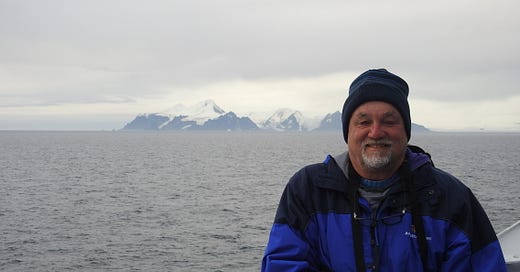



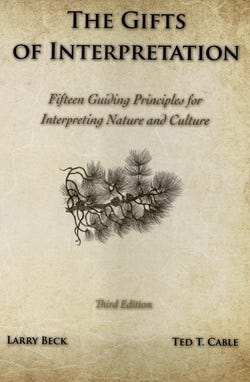

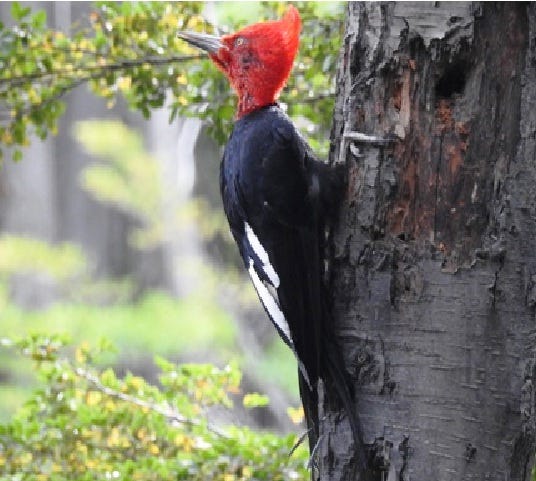
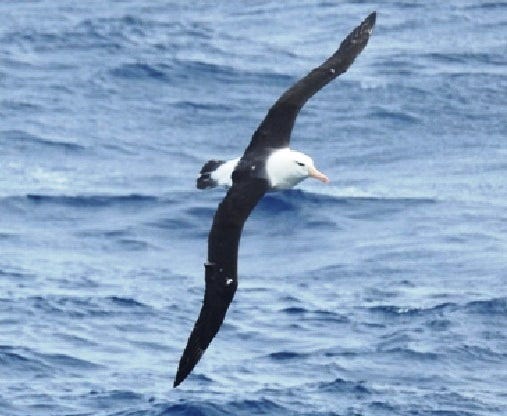
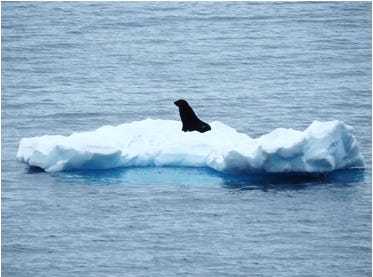
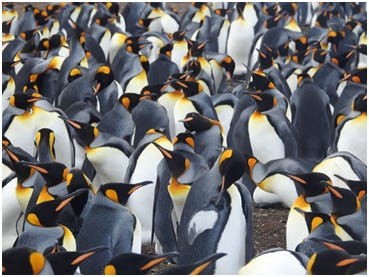


The magellan woodpecker isgigantic! What incredible photographs of Antartica. And now I am eager to find Ted's book.
I thoroughly enjoyed this. It allowed me to reminisce about a similar trip that I did in 2019. Like Ted, I couldn't afford a trip on an expedition ship and my friend and travel agent had tried to talk me out of going on a standard, albeit small cruise ship. I'm glad I didn't let him do so. Whilst I can relate to the comments about my feet not touching the surface, I am truly grateful to have seen the icebergs, whales, penguins and albatross in their natural environment. In addition to giving me an opportunity to relive my trip, this article added a dimension that I hadn't considered - it was as if I was able to appreciate the bird components in a new light.